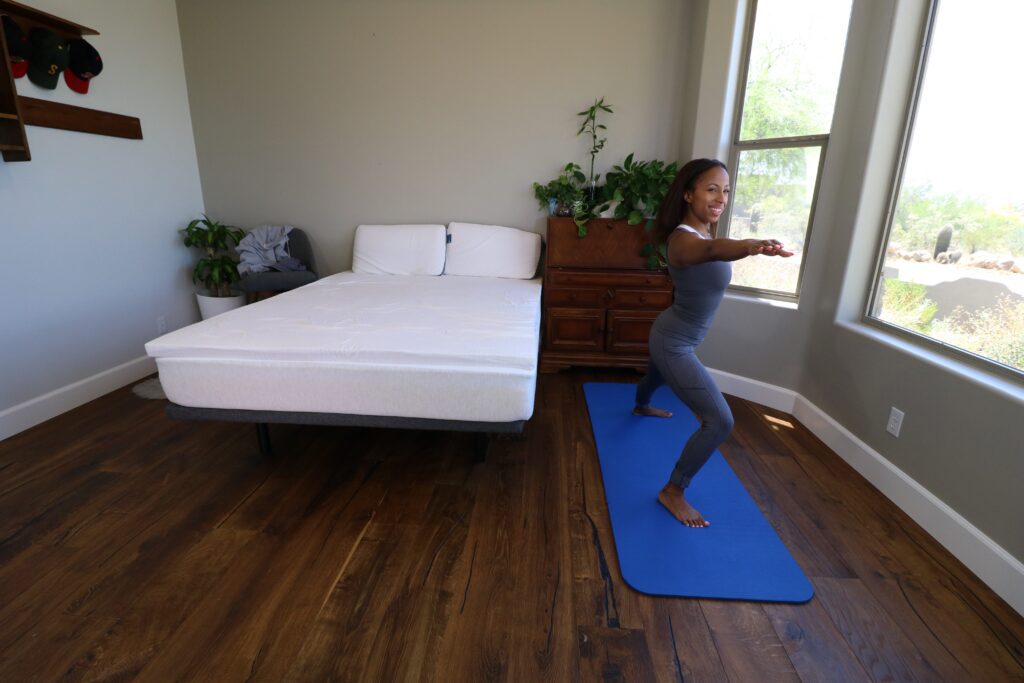
Yoga is an ancient practice with origins in India. While today many people who practice focus on the physical aspects of yoga, there is also a mind-body component inherent in this discipline. This mind-body connection happens through intentional and often slow and flowing physical movement through a series of poses, with a focus on breathing throughout the practice. That mind-body connection intrigues scientists, leading to studies of the physical and mental benefits of yoga.
Research into the effects of yoga on health and well-being reveals myriad benefits, including improved flexibility and balance and a lower heart rate. Other studies found benefits for pregnant women, women with restless leg syndrome and older adults.
According to a survey conducted by the National Institutes of Health (NIH), over 55% of respondents said yoga improved their sleep. In that same study, over 85% of people who practiced yoga found it reduced stress. Given these potential benefits, doing some gentle yoga poses before bed might be worth trying, because sleep is so intimately connected to our overall well-being.
The good news is that you don’t have to look like a social media yoga influencer, be unusually flexible, or have any prior experience to begin a yoga practice. You do have to practice consistently over time to experience any beneficial effects, however. Learn more below about the connection between yoga and better sleep.
Styles of Yoga
There are various styles of yoga that follow different philosophies and emphasize different physical and mental skills. If you decide to take a yoga class to learn how to reduce stress and get better sleep, choose relaxing forms of yoga rather than fitness-oriented styles such as Bikram, Ashtanga, or vinyasa yoga. Styles that tend to relax the body rather than elevate the heart rate include restorative, Iyengar, hatha, and yoga nidra.
Yoga and Better Sleep
According to WebMD, the slow and controlled breathing frequently done in yoga stimulates the vagus nerve. Actually more of a network of nerves, it runs from the brain down through the body. Yoga breathing that stimulates the vagus nerve can affect your nervous system in ways that help the body rest, which in turn helps you sleep better.
The mindfulness aspect of yoga can also help you get better sleep. The practice of mindfulness, or awareness in the present moment, can boost melatonin levels in the body, which can also help you relax enough to fall asleep.
Starting a Sleep-friendly Yoga Practice
Beginner classes are a great way to start a yoga practice. An instructor can teach you proper alignment and breathing techniques that you can incorporate into an evening routine at home. Look for classes geared toward beginners, better sleep, stress relief, or gentle yoga in the styles mentioned above — yoga nidra, restorative, Iyengar, or hatha yoga. There are also seated and other yoga classes for people with different abilities, typically known as adaptive yoga.
You don’t need a lot of special equipment to do yoga. A yoga mat is good to have; many range in price from $12 to $50 and are readily available at yoga studios, gyms, and many big box retailers. You can also make yoga “props” using pillows, blankets, and a tie from a robe to support you in yoga poses.
If you can, do bedtime yoga somewhere other than your bedroom. Some sleep experts feel that the bedroom should be reserved for sleeping and sex. However, you may find that also reserving the bedroom for relaxing activities, such as reading a physical book, meditating, or yoga, is perfectly okay. Try doing yoga in and out of your bedroom for a week or two to see which location works best for you in terms of sleep quality afterward.
Many gentle poses that can help you fall asleep can be easily done at home before bedtime. This Harvard Health Blog post includes some gentle yoga poses to help you relax before bedtime. If practicing at home, make sure you are able to get up from the floor without assistance after doing some of these poses.
If you’re not sure whether yoga is a good form of movement for you, see your healthcare practitioner to ask about it.

